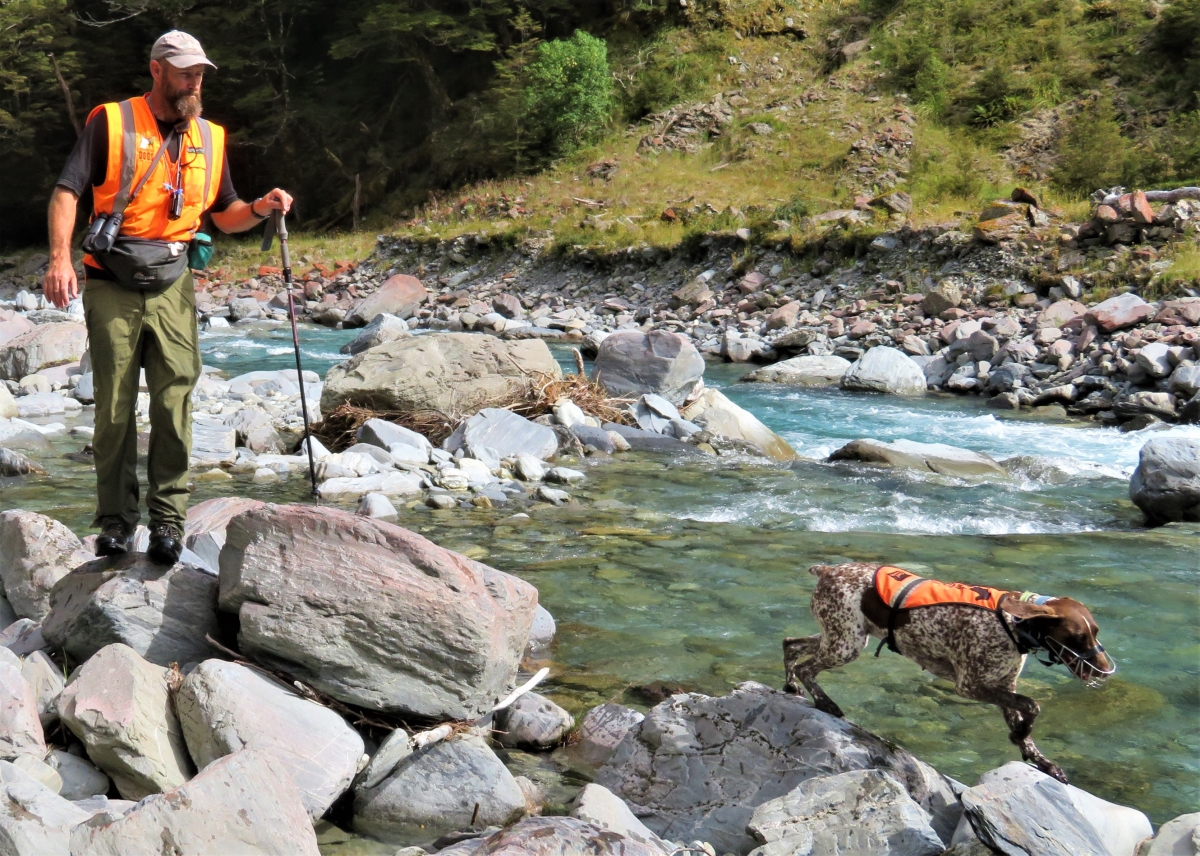Upper River Catchments – The Essence Of Life

Target threatened species: Whio / Blue duck (Southern) an ancient endemic waterfowl species of Aotearoa New Zealand – Nationally Vulnerable, Globally Endangered (IUCN Red List Threat Classification).

Focus areas include: the Blue, the Young Rivers, the Siberia Valley, the upper and mid-Wilkin, Newland, the Tiel, the Cameron, upper Makarora and associated areas.
Surveys undertaken to ascertain the current status of whio/ blue duck within the Makarora Catchment commenced this survey season (2017/2018) with the aid of an experienced whio surveyor and his protected species survey dog.

A breeding pair was confirmed for the upper Siberia Valley and two adult males were recorded on the Young River. Several moulting sites were also noted during February surveys. This is when whio moult their feathers and are most inconspicuous and vulnerable. Further walkover surveys sheduled for 2018/2019, 2019/2020, 2020/2021, 2021/2022 and beyound. Environmental (eDNA) water samples are also taken where possible. This method can produce whio records and additional information about the food suitability and availability within the environment.



Whio occupy a unique ecological niche being well adapted to fast flowing water and bolder habitats. This freshwater environment also support a variety of other wildlife such as eels, fish, aquatic plants and aquatic invertebrates.
Whio are considered an indicator of environmental quality with their presence confirming a clean and healthy water body able to support macro-invertebrates such as mayfly, stonefly larvae and caddisfly which sustain the diet of this species.
Current and future invasive mammalian predator control concentrates on locations where remnant populations persist, often overlapping with rock wren habitat within alpine basins. The aim is to restore and enhance whio populations within the Makarora catchment in line with other successful catchments identified within the DOC National Whio Recovery Plan.

**As of December 2021, we are sad to report that *Hoki * passed on to canine heaven following her retirement. Hoki has made a huge contribution to whio conservation by enabling essential monitoring of this endangered ancient taonga species throughout the catchments of New Zealand’s South Island. She has also helped raise awareness of whio through featuring in multi-media productions and doing guest appearances at presentations with her experienced handler and trainer Paul van Klink.



Following in Hoki’s footsteps; we are pleased to welcome *Kip, our new whio detection dog and her handler Cody Thyne to help complete the picture of what the remnant whio distribution and population status looks like for the Makarora and Wilkin catchments. Kip and Cody have been investigating the Tiel, Wonderland Valley, the Cameron, upper Makarora and recently the Siberia to locate this years surviving fledglings. Many stoats have since been caught within the Siberia Valley by traps installed by ABT for whio protection during 2019. This essential work is ongoing!
*ABT are delighted to be presenting at the upcomming New Zealand Ecological Society (2022) Conference: “Makarore Otanenui Catchment – A Recoverey Site For Whio”.
A full report available during 2023, guiding future conservation strategy for whio within this important locality. ABT’s mahi, updating the current population status alongside genetic analysis has shown that the Makarora whio is a remnant population of “National Significance”. Further details to follow…
Reference:
Birds as Biodiversity and Environmental Indicators (2017). Journal of Natural Sciences Research. ISSN 2224-3186. VO7, No. 21.
Testing the effectiveness of integrated pest control at protecting whio (Hymenolaimus malacorhynchos) from stoat (Mustela erminea) predation in beech forests (Nothofagaceae). Kate E. Steffens, Jason P. Malham, Rebecca S. Davies and Graeme P. Elliott. New Zealand Journal of Ecology (2022) 46 (1) : 3470.


